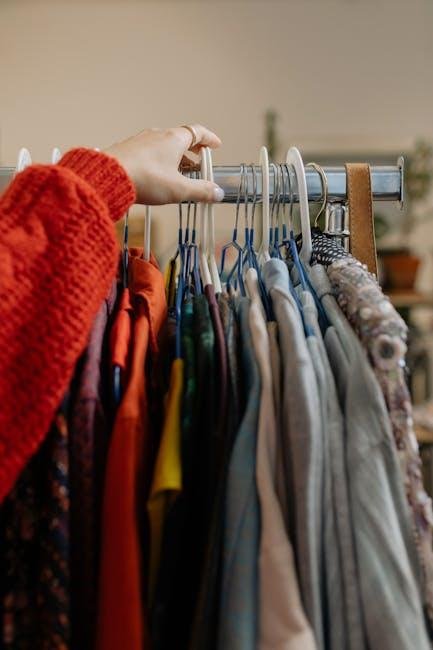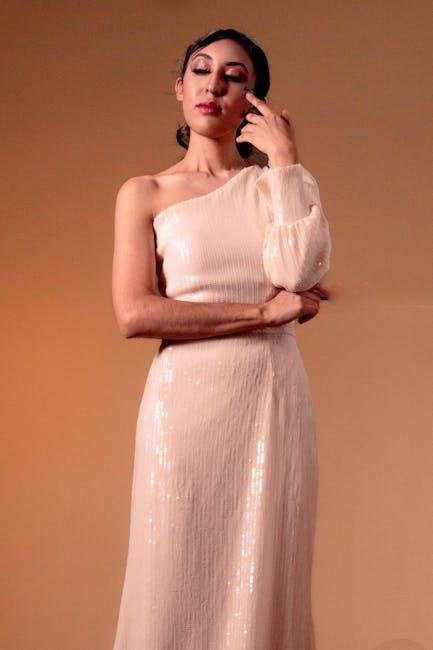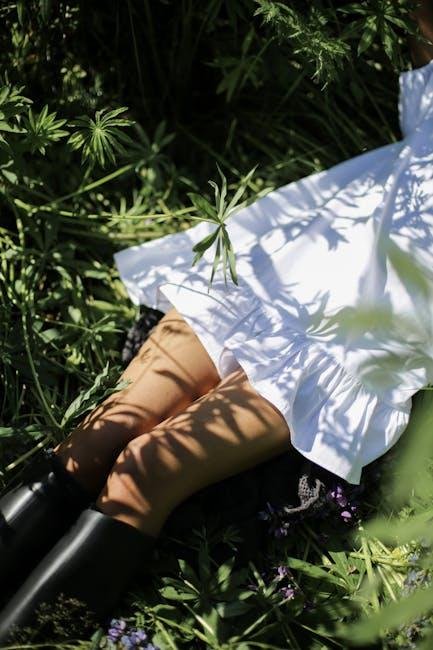A Beginner’s Guide to Sustainable Fashion
in a world increasingly defined by fast-paced trends and disposable styles,the call for a more conscious approach to fashion has never been louder. As the impacts of climate change and unethical labor practices weigh heavily on the conscience of consumers, the concept of sustainable fashion emerges as a beacon of hope. but what exactly does it mean to dress sustainably? For those standing on the threshold of this greener way of styling, navigating the landscape of eco-friendly fabrics, ethical production, and mindful consumption can feel overwhelming. This guide aims to demystify sustainable fashion, offering beginners the tools they need to embrace a wardrobe that not only looks good but also does good. from understanding the fundamentals of sustainable materials to practical tips on building a conscientious closet, we invite you to step into a world where fashion meets obligation. Join us as we explore the principles of sustainability, empowering you to make choices that reflect your values, one outfit at a time.
Understanding Sustainable fashion Principles
Sustainable fashion is a holistic approach that emphasizes reducing environmental impact while promoting ethical labor practices. This movement encourages brands and consumers alike to consider the full lifecycle of clothing, from raw material sourcing to waste management. Key principles include:
- Eco-friendly Materials: Prioritizing organic and recycled fabrics that minimize harm to the planet.
- Ethical Production: Ensuring fair wages and working conditions for all individuals involved in the manufacturing process.
- Transparency: Brands being open about their supply chain practices and the impact of their operations.
- Timeless Design: Focusing on quality over quantity, creating pieces that are meant to last rather than follow fleeting trends.
Additionally, one central tenet of sustainable fashion is the concept of the circular economy, wich aims to keep materials in use for as long as possible. This can manifest through practices such as upcycling, recycling, or encouraging repair instead of disposal. Consider the following comparison table of customary versus sustainable approaches:
| Aspect | Traditional Fashion | Sustainable Fashion |
|---|---|---|
| Material Sourcing | Limited to virgin resources | Utilizes recycled and organic materials |
| waste Generation | High waste outputs | Emphasizes reduction and recycling |
| Labor Practices | Often exploitative | Promotes fair wages and safe conditions |

Identifying Ethical Brands and Materials
In your quest for sustainable fashion, learning to identify ethical brands and materials is crucial. Start by researching brands that emphasize their commitment to sustainability through transparency. Look for companies that openly share data about their sourcing practices,labor conditions,and environmental impact. Key factors to consider include:
- Certification Labels: Seek out renowned certifications such as GOTS (Global Organic Textile Standard), Fair trade, or OEKO-TEX, which signify adherence to specific ethical standards.
- Material Origins: Favor brands using organic or recycled materials, which reduce reliance on harmful farming practices and excessive resource consumption.
- Labor Practices: Investigate weather a brand ensures fair wages, safe working conditions, and proper treatment of workers throughout its supply chain.
Next, delve into the materials used in the garments you’re considering. understanding the environmental impact of textiles can steer you toward more sustainable choices. Here’s a quick comparison to guide your material selection:
| Material | Environmental Impact | Ethical Consideration |
|---|---|---|
| Organic Cotton | Lower water usage, no harmful pesticides | Supports fair trade practices |
| Recycled polyester | Reduces plastic waste and conserves resources | Can be ethically produced |
| Hemp | Minimal water and pesticide use | Often sourced from fair labor conditions |

Adopting Mindful Shopping Practices
Mindful shopping is not just a trend; its a conscious choice that reflects our values and beliefs. By shifting our focus towards quality rather than quantity, we can embrace a more sustainable way of engaging with fashion. Consider the following practices to enhance your shopping experience:
- Research Brands: Investigate the sustainability practices of the brands you consider. Are they committed to ethical production and eco-friendly materials?
- Prioritize Durability: Choose pieces that are well-made and designed to last,reducing the need for frequent replacements.
- Shop Secondhand: Explore thrift stores and online resale platforms to find unique items while minimizing environmental impact.
- Adopt a Capsule Wardrobe: Curate a selection of versatile, timeless pieces that can be mixed and matched, focusing on functionality.
Incorporating these practices into your shopping habits not only benefits the habitat but also fosters a deeper connection with your wardrobe. To succinctly visualize the impact of mindful shopping, consider the following table which illustrates the benefits of each practice:
| Practice | Benefits |
|---|---|
| Research Brands | Informed choices lead to ethical consumption. |
| Prioritize Durability | Less waste through long-lasting garments. |
| Shop Secondhand | Unique finds and reduced textile waste. |
| Adopt a Capsule Wardrobe | Simplified style and creativity in outfit combinations. |

Caring for Your Wardrobe Sustainably
- Assess Your Wardrobe: Start by evaluating what you have. Identify pieces that you love and wear frequently.Consider donating items that no longer serve you or that you haven’t worn in the past year.
- Care for Your Clothes: Extend the life of your garments by properly caring for them. Follow washing instructions, use cold water, and air dry when possible to reduce wear and tear.
- Repurpose and Repair: Instead of discarding damaged clothing, learn basic repair techniques. Even simple sewing skills can save a favorite piece from ending up in a landfill.
- Choose Timeless Styles: Invest in versatile, classic pieces that won’t go out of fashion quickly.this approach not only elevates your wardrobe but also reduces the frequency of new purchases.
| Tip | Benefit |
|---|---|
| Wash Less | Preserves fabric strength and colour. |
| Buy Quality | Longer-lasting pieces reduce waste. |
| Explore Thrift | Unique styles and less environmental impact. |
In addition to caring for what you already own, embracing a more sustainable wardrobe involves cultivating mindful shopping habits. Before acquiring new pieces,take time to research brands that prioritize sustainability and ethical practices. Look for certifications, such as Fair Trade or GOTS (Global Organic Textile Standard), which signify a commitment to environmental and social responsibility. By supporting these brands, you contribute to a movement that values quality over quantity.
don’t underestimate the power of community.Engage with local clothing swaps or online platforms that facilitate garment exchange. These opportunities promote a circular economy and allow you to refresh your wardrobe without contributing to the fast fashion cycle. By sharing and trading with others,you actively participate in a sustainable fashion ecosystem that celebrates creativity and reduces waste.
Concluding Remarks
As we embark on this journey towards a more sustainable wardrobe, remember that every small choice contributes to a larger movement. Embracing sustainable fashion isn’t just a trend; it’s a commitment to a world where style and consciousness coexist harmoniously. By opting for timeless pieces, supporting ethical brands, and being mindful of our consumption, we play a vital role in nurturing both our planet and our personal style.
As you step into this new era of fashion, let curiosity guide you. Explore, experiment, and share your journey with others. Each step taken in the name of sustainability is a stitch woven into the fabric of a brighter future. the next time you reach for that new outfit, recall the stories behind it and the impact it has, not just on you, but on the world around you.
Thank you for joining us in this exploration of sustainable fashion. Together, let’s create a vibrant tapestry where fashion and environmental stewardship thrive, ensuring that the threads of our choices leave a positive mark for generations to come. happy sustainable styling!



